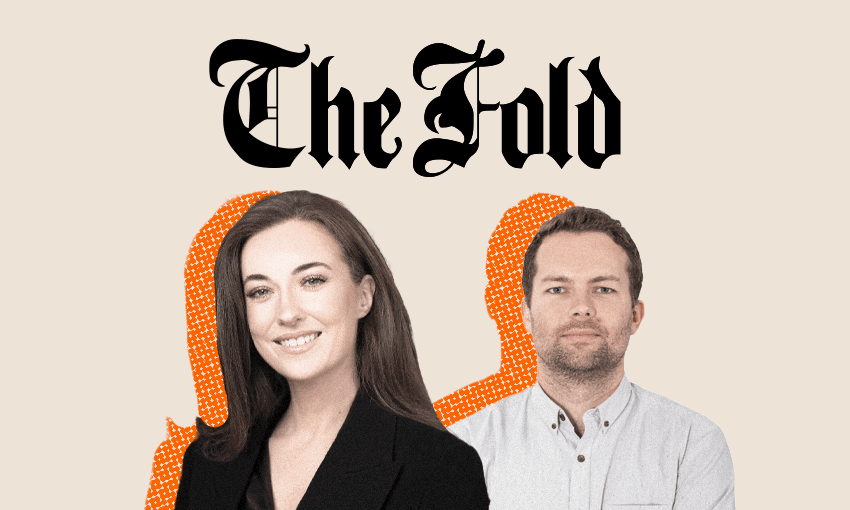David Owen from oOh!media and Tori Colebourne from Black Pearl Group joined Duncan Greive on The Fold to talk about the effects of data and AI on advertising.
Out-of-home advertising is increasingly becoming a data-driven industry. With data helping to show us how people move around and how to reach them when they do, there’s far more to it than just whacking a poster up at a bus stop.
The world is really highly targeted and data driven and responsive technology is something that New Zealand isn’t particularly sophisticated at, and we’re leaving a lot of money and opportunity on the table because of it.
David Owen, Research and Insights director at nationwide out-of-home media group oOh!media and Tori Colebourne, CMO at Black Pearl Group, an NZX listed SAAS / cloud business, joined Duncan Greive on The Fold to talk about the role of data in media and communications decision-making in 2024 and beyond.
Duncan Greive: David, is there a particular set of data or an insight that has really excited you recently in terms of the out-of-home space?
David Owen: All data is created equal in my eyes. It’s what you do with it off the back end. So what I look for is “what’s the insight? What’s the story I’m trying to tell? And what’s the data that you can feed into that and mould to create something tangible for a business or an advertiser or marketer to pick up and run with?”
We partnered with the tech company Mooven, who do a lot of traffic management trying to manage disruption for construction companies when they’re doing roadworks, and I saw an opportunity for us as a business to look at mobility of traffic. That has a really big relevance to what we do in out-of-home. So how do we use those mobility insights to tell really interesting stories about consumer mobility? You look at long weekends, and what’s happening: people leaving the city earlier, what are those times in which people get in their car and try to beat traffic, and they ultimately get stuck in traffic? For us, that’s a really good opportunity to go, “hey, if you’re an advertiser and you want to reach people on their way out of the big smoke, what are the best times to start executing your creative?
Tori, you’re relatively new at Black Pearl, but have been in the space of data and its application prior to that with Spark and its subsidiary Curious. Where do you see the opportunity that exists in this space right now?
Tori Colebourne: For the last 12 years, I’ve probably been at that beautiful intersection, quite deeply educating myself around information systems and marketing. And as the output of that there’s a lot of data and analytics that come from that.
My interest in out-of-home has really emerged in the last couple of years, because there’s this huge opportunity where all your offline media is now turning to digital billboards, as well as hyper-personalisation across content.
There’s this opportunity now where you can actually take behavioural analytics, you can take geolocation, you can take the temperature of the day, you can take the time of day, the month in the year, and you can decide when it’s best to buy. It’s a really big opportunity that never used to be there. In New Zealand it’s been only really spoken about in the last couple of years.
This stuff can often seem a little bit abstracted, unless you are really in the weeds of it. I was wondering, David, if there was a client or a campaign that you have had proximity to recently that illustrates someone who’s really taking advantage of this, and leaning into the data insights?
DO: There are a lot of New Zealand marketers that either don’t leverage data or frankly just can’t afford it. I think that’s a really big problem. Just that kind of tyranny of distance New Zealand has, definitely in the research space where we have big Aussie clients, and they turn up and they go, “we did this research in Australia, we want to do it in New Zealand” and you go “cool, well, research costs the same across both countries, but your campaign here is 10 cents compared to the dollar over in AU so do you wanna spend all your money on research or all your money on actually doing effective marketing?
One that has stuck out to me recently, that most people probably know, is Tina from Turner’s. I think it’s a really powerful way in which a marketing department has orientated themselves to leverage their own first party data, first and foremost. So they understood what they actually need to drive in terms of business outcomes, they understood that they need to get more people selling their cars to them, so they had better stock, they understood the kind of consumer process or path to purchase that if people sold the car to them, they’re more likely to buy a car from them. And then added on what I think is a really unique New Zealand campaign in terms of the creative territories.
Tori, you recently helped author a paper on AI to establish a benchmark for New Zealand’s AI maturity, with MB AI forum and Spark. We’ve seen so many incredible demos, particularly in the generative space. But the use cases are often a bit abstracted, or not as strong as the demos, at least in the public mind. Is there an example that came through in that context that sort of did make it into the more concrete realm for you?
TC: That research report was establishing the benchmark for New Zealand. It was two years ago when we did that report, and it was a perfect time to do it, because it took a snapshot of New Zealand’s AI maturity. Most of the outcomes of that report were around the fact that only one in five organisations in New Zealand had actually moved out of trial and had put something into their operations that they were actually getting good business outcomes from. It also showed a snapshot of us against different countries across the world to show that if we didn’t act that we would be left behind.
Arguably, marketing teams have actually probably been the first to move. It’s definitely been something that as marketers, we’ve been looking at automation for the last couple of years, most organisations use inbound marketing and CRM systems, the likes of HubSpot, where you’ve been doing hyper-personalised communication through those tools, and now with the additive of being able to have generated content through generative AI, marketing teams are probably the first in the department of any enterprise that have been moving a lot quicker.
Follow The Fold on Apple Podcasts, Spotify or wherever you listen to podcasts.

